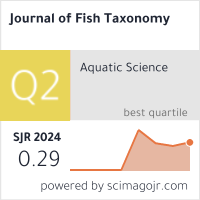Effect of Foliar Application of Nutrients on Growth and Yield of Italian Ryegrass Under Rainfed Condition
Keywords:
Biomass Production, Foliar Application, Italian Ryegrass, Micronutrients, Rainfed Agriculture, Yield OptimizationAbstract
There are severe livestock production challenges in Pakistan given the shortages of quality forage, especially in conditions of rainfed. Conventional forage crops such as oat and white brassica grew slowly and did not satisfy the nutritional requirements of livestock throughout the year due to unavailability of quality fodder during times of climatic stresses including drought and loss of soil nutrients. An alternative which can be used is Italian ryegrass (Lolium multiflorum) which is a vigorous cool-season grass that grows fast and is adaptive. Nonetheless, micronutrient deficiency, notably, zinc (Zn), sulfur (S) and boron (B) tends to hinder its productivity. The objective of the research paper was to determine the impact of foliar application of Zn, S, and B on the growth, yield, and nutritional quality of Italian-ryegrass under rainfed conditions. A field experiment was carried out over two years and used Randomized Complete Block Design (RCBD) with 8 treatments (the individual and combined application of Zn, S, B, and a control). Agronomic-parameters (plant height, biomass, tillers, spike length and yield) were measured and biochemical traits included protein content, ADF, NDF and chlorophyll. The findings established that the combined use of zinc, sulphur and boron (T8) increased plant height, dry biomass, yield and protein content by 121, 81, 138 and 20 percent respectively in comparison to the control. In addition to this, T8 (Zn + S + B) also enhanced chlorophyll-content as well as fiber quality because it had the highest value of chlorophyll content (2.9 mg/g), showing improved photosynthetic activity. Control treatment (T1) recorded the lowest level of chlorophyll-content (1.3 mg/g). The height of the plants, biomass, and yield were associated with positive correlations respectively (R 2 = 0.92 -0.98) which indicates their mutual dependency. Conclusively, Zn foliar, S, and B, T8 substantially contributed to plant growth, yield, and nutritional value of Italian-ryegrass when grown in rain fed regions. The implications of these findings present the value of the management of micronutrients in improving the productivity and resilience of forages and provide a sustainable solution to fodder shortage and contribute to climate-smart agriculture in water scarce areas.








